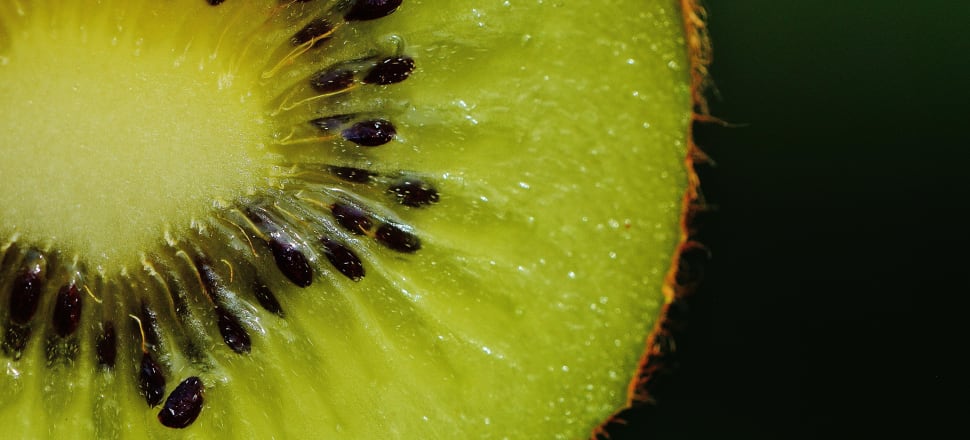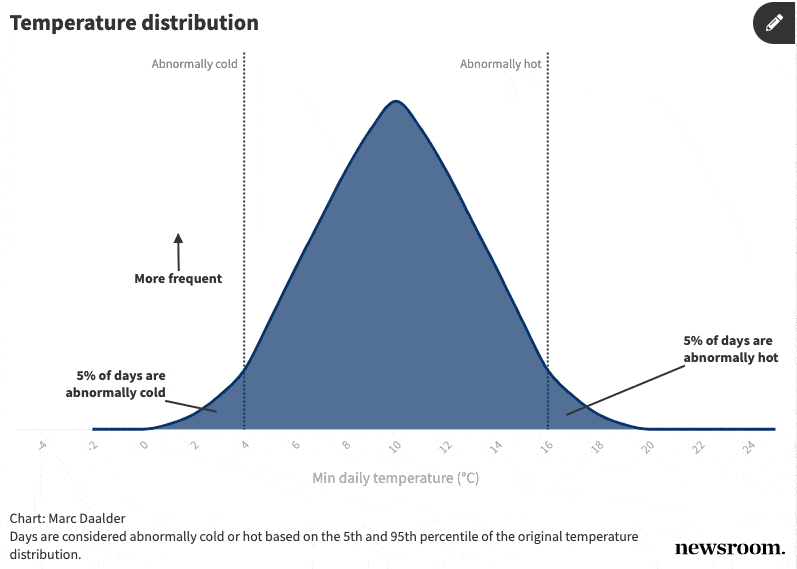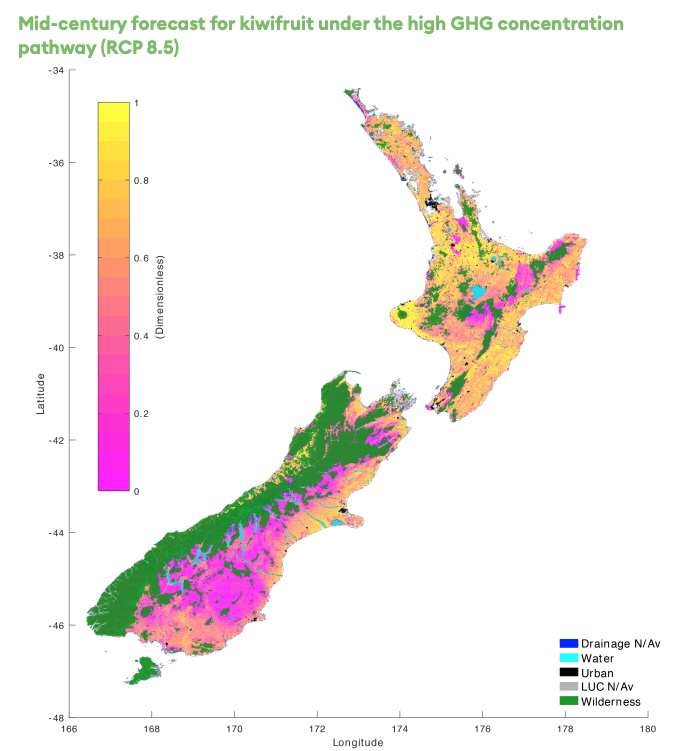
Kiwifruit growers are seeking to reduce emissions and improve their resilience to climate impacts through the development of new breeds of fruit, Marc Daalder reports
Climate change is coming for an iconic New Zealand export, with Zespri reporting rising temperatures could disrupt the consistent growth of kiwifruit in the coming decades.
A report for the Ministry for Primary Industries, released in June, also shows the current locations most suitable for cultivating kiwifruit could shift around the country. In high-emissions scenarios, the Bay of Plenty and Northland would become too warm for consistent and high-quality fruit production while Taranaki, Hawkes Bay and even Canterbury would become new centres for growth.
"This project was looking at the footprint of the crop and where it currently grows and how climate change at different scenarios might change that footprint," Jill Stanley, a crop physiologist at Plant and Food Research and one of the authors of the report for MPI, told Newsroom.
"We looked at a number of factors that are important for kiwifruit growing. Obviously, winter chill is one, but we've also got frost risk. You might get tonnes of winter chill but if the flowers all get killed by frost in the spring when they emerge, it's not going to grow either."
One of the main issues in growing kiwifruit is that the plants need to be chilled to a certain temperature over winter. As average temperatures rise, it becomes less and less likely the plants are chilled for long enough.
"They require a certain amount of chilling for good bud-break and flower development. If they don't get that chilling ... you would get a crop, but maybe not economic."
A change in average temperatures also makes cold extremes less likely, further reducing chilling opportunities but potentially protecting flowers from frost.

Zespri also identified winter chilling as a high-priority risk in a 2021 disclosure on climate-related risks. By 2050, temperature increases of 1 to 1.5 degrees could "prevent consistent bud-break and king flower production in primary growing regions".
Rachel Depree, Zespri's executive officer for sustainability, told Newsroom there wasn't yet any quantitative data showing climate change was affecting operations right now.
"We are seeing changes. The nature and extent of them we are still working to quantify. But I think at a grower level, they would certainly tell you they are seeing changes to the climate," she said.
The company's 2021 report is high-level but a granular adaptation plan is set to be released by the end of the year. Depree said that plan won't just focus on the physical impacts of climate change. It will also grapple with transition risks as markets seek out low-carbon produce and turn their backs on the fruit of high-emitting processes.
"We know from our market insight research that there's a group of consumers who care a lot about carbon. They will increase over time and we have to make sure that we are grabbing a share of that carbon [conscious market] but also making sure that we retain the visibility and the suitability of the brand of Zespri kiwifruit for those particular consumers."
There are a range of options available to the sector to adapt to climate impacts.
Those include new cultivars of kiwifruit more resilient to warmer temperatures, traditional and new technologies to improve the consistency of bud-break (the first step in the growth of new fruit) and the relocation of production.
"We would see that Bay of Plenty would reduce their kiwifruit area and they would probably be changing to different cultivars," Stanley said. "But there's potential that we're going to grow the areas that we can grow kiwifruit in. Hayward [a typical green kiwifruit cultivar] which would probably not be so able to grow in the Bay of Plenty will be able to grow in other areas further south - Taranaki, Hawkes Bay and maybe even Canterbury."

Depree said there were three ways she thinks about physical climate risks: "What are the grower practices that they do, day to day, in the orchard to deal with that? What do we need to do in terms of new cultivars that will build our climate resilience? And then, what are the production systems that we might think about in the future and how do we bake in an understanding of how resilient they will make us?"
New breeds are being trialled in warmer Northland to see how they might fair in places like the Bay of Plenty in the future. Zespri's adaptation plan for the sector will also highlight not just the risks from climate change but also some of the fixes for those threats.
"There are some risks emerging. We need to be prepared for them. We're really confident in our industry's ability to adapt."








